�
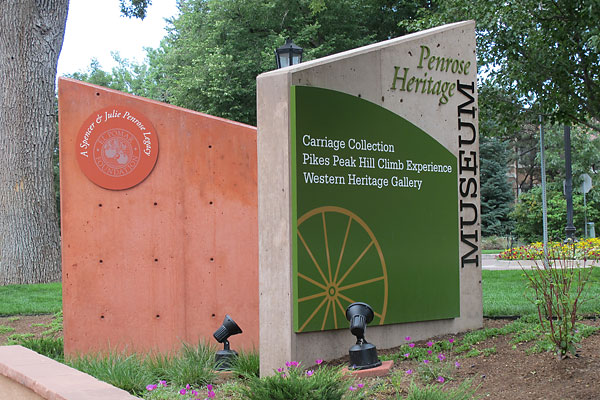
�
�
BritishV8 Tours: The Penrose Heritage Museum
��
as published in BritishV8 Magazine, Volume XXII Issue 1, December 2014�
�
�
words and photos by Curtis Jacobson�
�
Two Transportation Museums in One!
��
During our 2014 annual meet, BritishV8 members visited The Penrose Heritage Museum in Colorado Springs.�
�
Spencer Penrose (1865-1939) built a great fortune in Colorado's mining industry, and invested much of it�
back into Colorado Springs based businesses and charities including the Broadmoor Hotel, the Pike Peak�
Automobile Highway, the Cheyenne Mountain Zoo, and many others. Together with his wife Julie (1870-1956),�
Penrose established the El Pomar Foundation in 1937. The El Pomar Foundation has subsequently managed�
over $320,000,000 in charitable gifts to advance the arts and humanities, education, health services,�
and community initiatives. The El Pomar Foundation operates the Penrose Heritage Musuem, which features�
two distinct collections:�
�
�
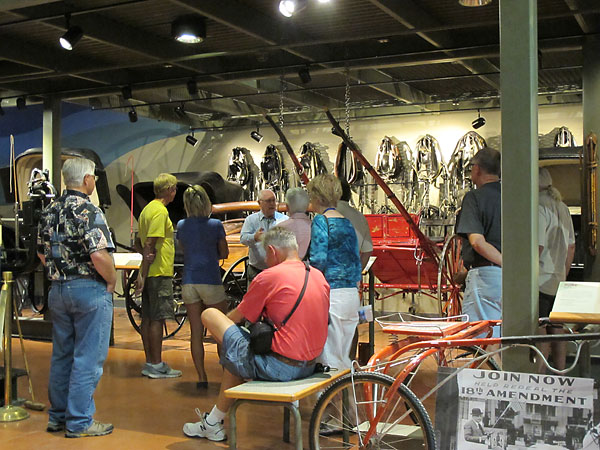
�
Through the first half of our tour we learned about the history of horse drawn carriages
�
dating from approximately the beginning of our country.
�
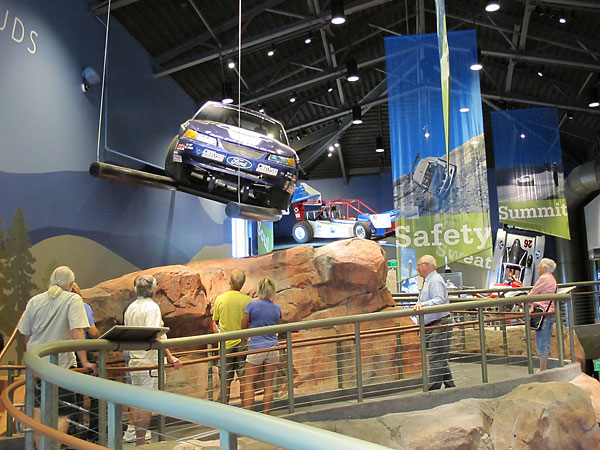
�
The second half of our tour focused on aspects of the Pike's Peak Hillclimb.
�
�
The museum is located at 11 Lake Circle, Colorado Springs, Colorado 80906. Phone: 719-577-7065.�
Visiting hours are 9am to 5pm from Monday through Saturday and 1pm to 5pm on Sunday.�
Admission is free.�
�
A Brief Survey of the Museum's Carriage Collection
��
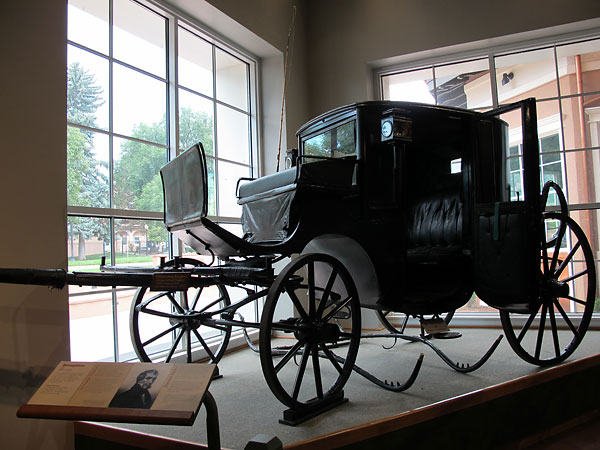
�
Brougham Carriage (coachbuilder unknown, circa ~1840)
�
Brougham style carriages were first introduced in London, in 1838. Lightweight and refined, with
�
generous side windows, coachmakers across Europe and then North America soon followed fashion
�
and introduced their own brougham carriages. This particular example belonged to President William
�
Henry Harrison, who died of pneumonia just one month after his riding his horse down Pennsylvania
�
Avenue in his inaugeration parade. Perhaps he should have used his carriage that day.
�
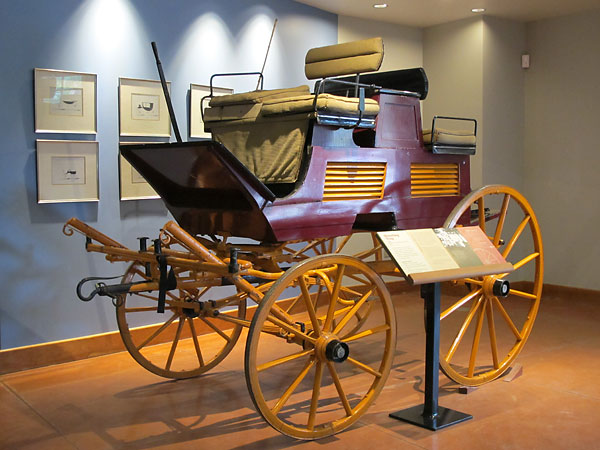
�
Hunting Break (by William H. Gray, circa 1895)
�
Hunting Breaks (a.k.a. "shooting traps") feature built-in kennels for transporting hunting dogs.
�
Louvered panels provide ventilation for the dogs. This carriage also features a compartment between
�
its seats suitable for transporting shot game or for the hunter's picnic lunch.
�
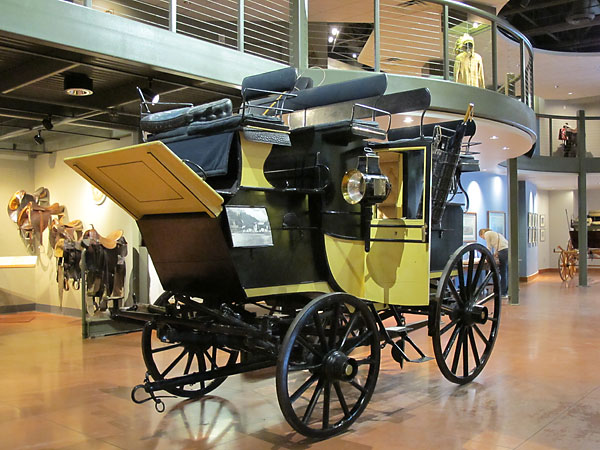
�
Gentleman's Drag (by Brewster and Company, New York NY, circa 1890)
�
This remarkable vehicle seats 18, but only four can ride on the inside! Built for private customers, a
�
gentleman's drag is built lighter than similar looking commercial vehicles such as Concord coaches and
�
English road coaches (a.k.a. "Talley-Ho coaches"). This particular example belonged to a prominant
�
New Yorker named Charles A. Baldwin. It features its original upholstery, some of which is walrus hide!
�
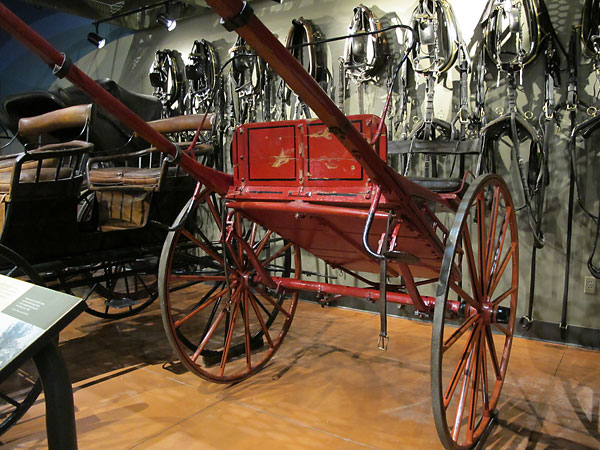
�
Training Cart (coachbuilder unknown, circa ~1893)
�
Distinctive features of training carts (a.k.a. "breaking carts") include an iron arch that keeps reins
�
from touching and spooking a young horse, and even more importantly, extra long shafts to prevent
�
the horse from kicking its driver. Nonetheless, you can see hoof marks on the kick board! Training
�
carts were more widely used than you might imagine; many people appreciated their light weight
�
and nimble handling. Steel tires on this particular example contributed to its durability.
�
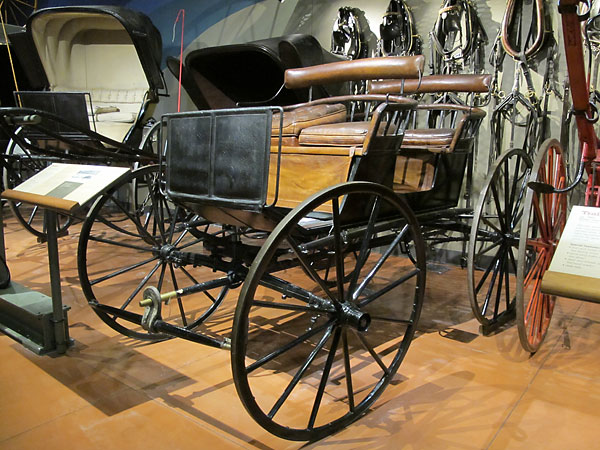
�
Surrey (by Brewster and Company, New York NY, circa 1897)
�
Brewster and Company introduced their tremendously popular four seat "Surrey" carriage in 1872.
�
Many other builders followed with similar designs. Cutaway doors to make climbing up and into
�
rear seats didn't appear on surreys until the mid 1880s. This particular example still features
�
its original boar's hide upholstery and bentwood backrests, but no "fringe on the top".
�
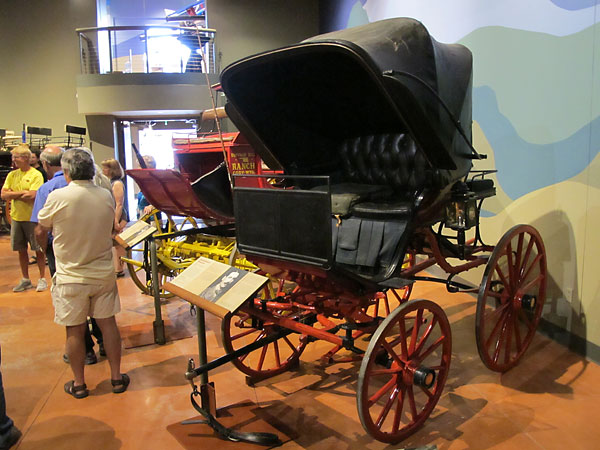
�
Gentleman's Phaeton (by Brewster and Company, New York NY, circa 1890)
�
The phaeton (pronounced FAY-ton) style originated in the late 1700s. Tall and flamboyantly
�
styled, but sporty too: phaeton's were primarily intended for a single person but could
�
carry two up front, plus they came with a rear-facing seat suitable for a servant.
�
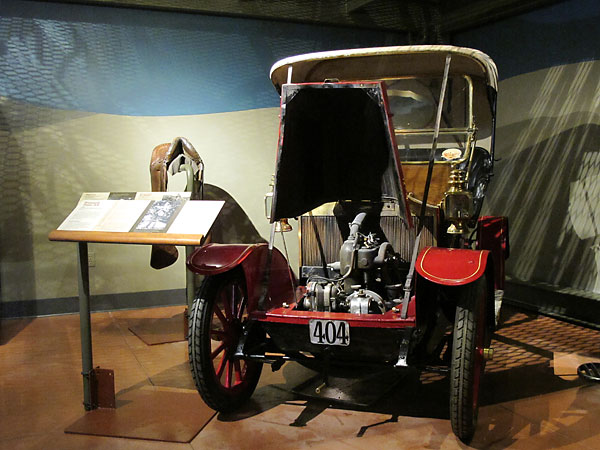
�
Renault Type AX (circa 1906)
�
In 1906, Renault produced approximately 2200 cars and opened their first U.S. market dealership
�
in New York city. Notice that the body on this example is in the phaeton carriage style. The brass
�
framed windshield and acetylene lanterns are period-installed, American-made accessories.
�
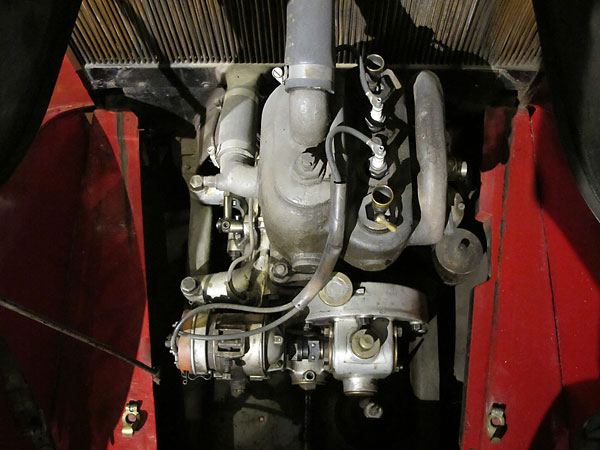
�
Radiators mounted behind engines are a characteristic feature of early Renaults.
�
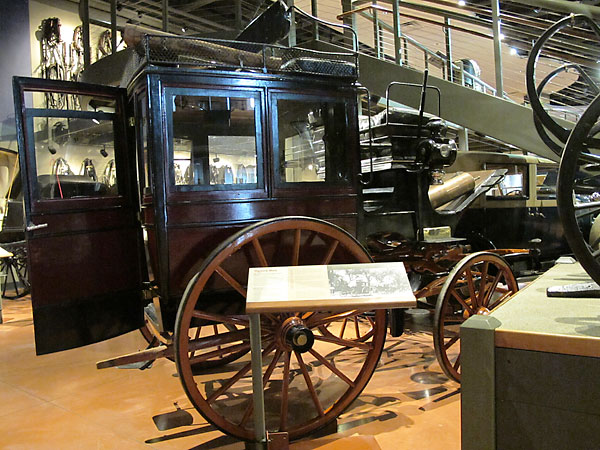
�
Opera Bus (by Million-Guiet & Compagnie of Paris, France, circa 1890)
�
This carriage was originally owned by Chester A. Arthur II, son of America's 21st President.
�
He imported it to America and used it for club rallies and amateur carriage racing. This carriage
�
can carry ten passengers. Its carbide headlamps are connected to a gas tank under the drivers seat.
�
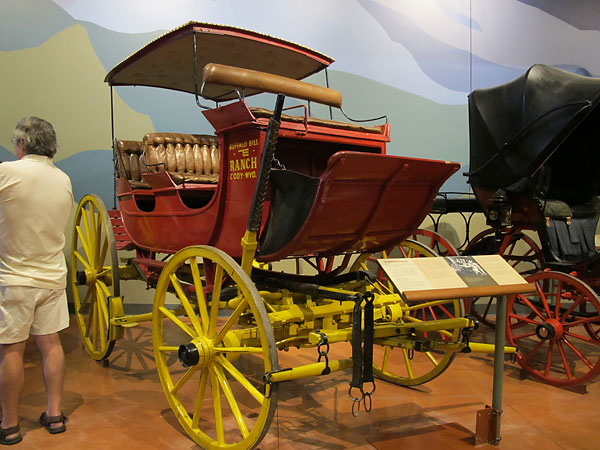
�
Yellowstone Carriage (by Abbot-Downing Company, Concord NH, circa 1895)
�
This carriage was build for Buffalo Bill Cody, who ordered it unpainted so he could better inspect
�
the workmanship. The design, including a canopy hard top, was optimized for siteseeing excursions.
�
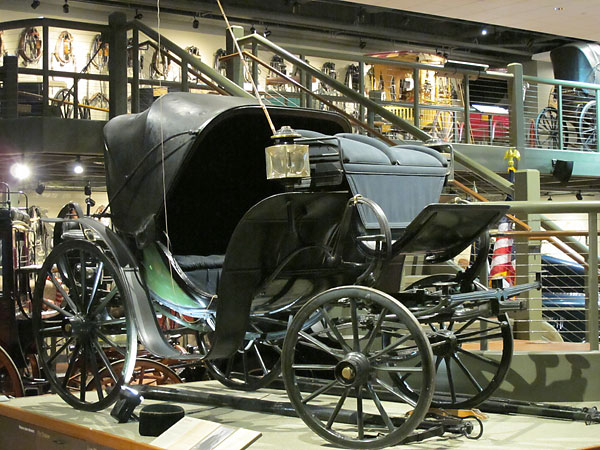
�
Victoria Carriage (by Brewster and Company, New York NY, circa 1862)
�
This elegant carriage was originally owned by Chester A. Arthur, America's 21st President.
�
(Served 1881-1885, following the assassination of President Garfield). Note the low sill height
�
and double-sprung suspension. Imagine its leather roof folded down. This elegant carriage
�
was built for promenading across New York's new Central Park, which opened in 1857.
�
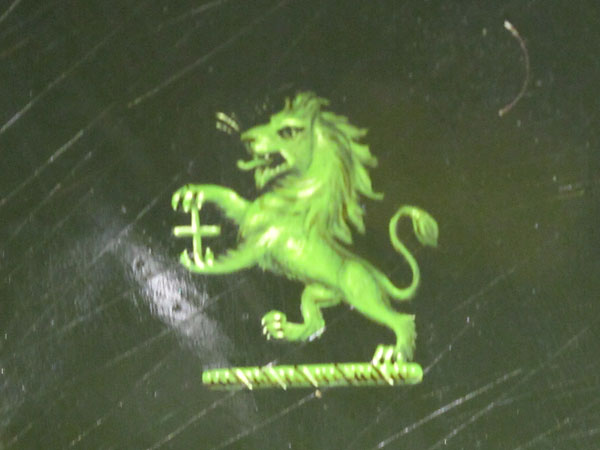
�
Lion: less than two inches tall, but grand nonetheless.
�
The carriages in Penrose's collection, including President Arthur's Victoria, are generally
�
displayed in excellent, unrestored condition. Countless tiny, fascinating details remain.
�
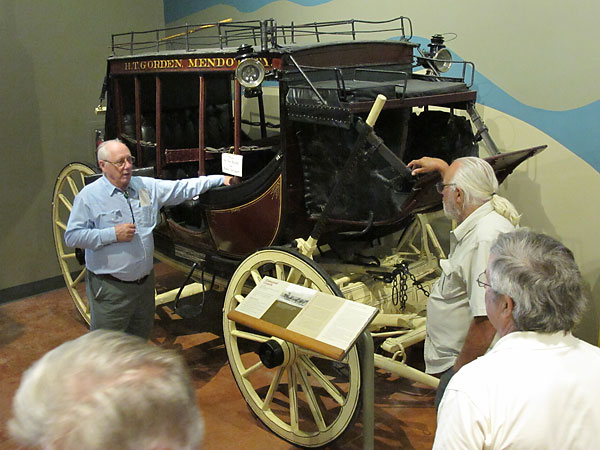
�
Concord Coach (by Abbot-Downing Company, Concord NH, circa 1857)
�
As seen in countless western movies, stagecoachs transported people and mail. This coach
�
ran between California's Fort Bragg and Cloverdale, about 80 miles each way. It seats six
�
inside and three outside, plus roof-top riders on occasion. Best seat: next to the driver.
�
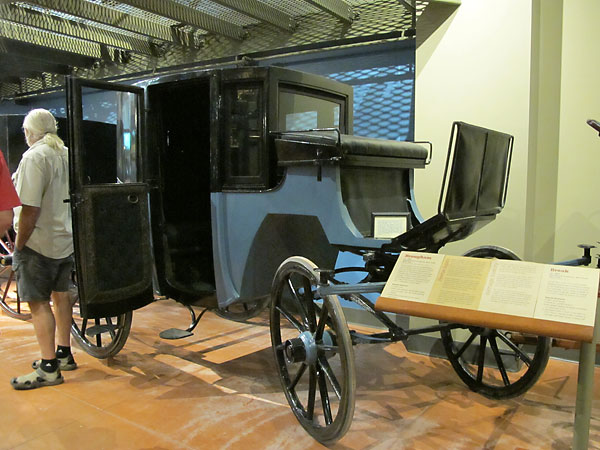
�
Brougham (by Brewster and Company, New York NY, circa 1892)
�
In 1839, Lord Peter Henry Brougham (rhymes with home) commissioned the first carriage of this
�
compact, closed style. This brougham, once owned by the art collecting Guggenheim family, has
�
glass windows, rubber tires, and step covers (on the doors) to keep steps free of mud.
�
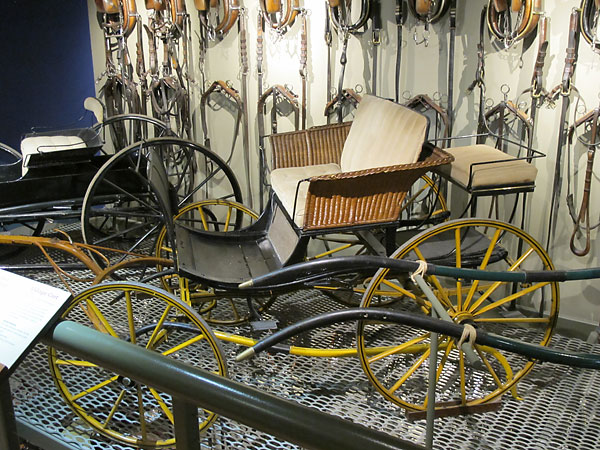
�
Basket Phaeton (by Horace Ervein, Ogontz PA, circa 1905)
�
Featuring stylish paintwork, brass hubcaps, corduroy upholstery, and a comfortable willow
�
wicker seat: this style of phaeton satisfied discerning turn-of-the-century women.
�
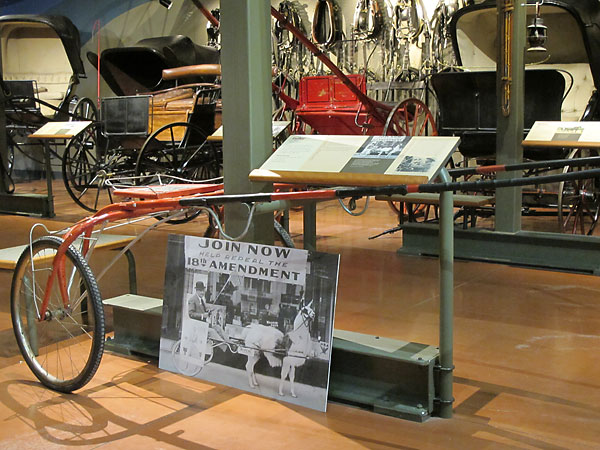
�
Bicycle Sulky (builder unknown, circa 1915)
�
Scottish veterinary surgeon John Boyd Dunlop re-invented and developed manufacturing processes for
�
pneumatic bicycle tires in 1887. (Unbeknownst to Dunlop, someone else had patented the concept
�
40 years earlier.) By 1890, Dunlop's tires were being mass-produced, and by 1892 pneumatic tires
�
were available (in conjunction with wire spoke wheels) on lightweight "bicycle sulky" carriages.
�
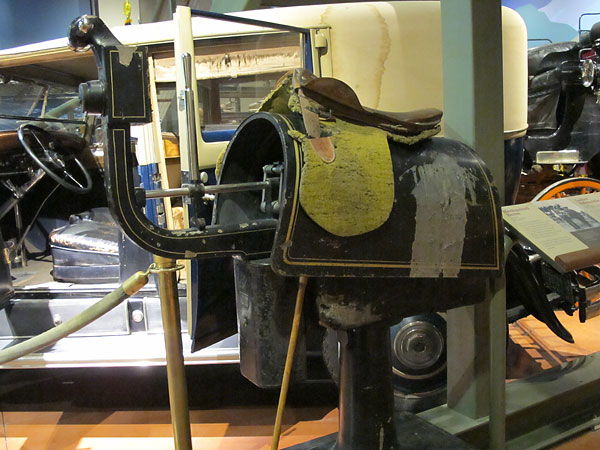
�
Mechanical Horse (S.A.G., Germany, circa 1910)
�
Spencer Penrose purchased this mechanical horse so he could ride every single day
�
and even practice polo mallet swings without concern for Colorado's winter weather.
�
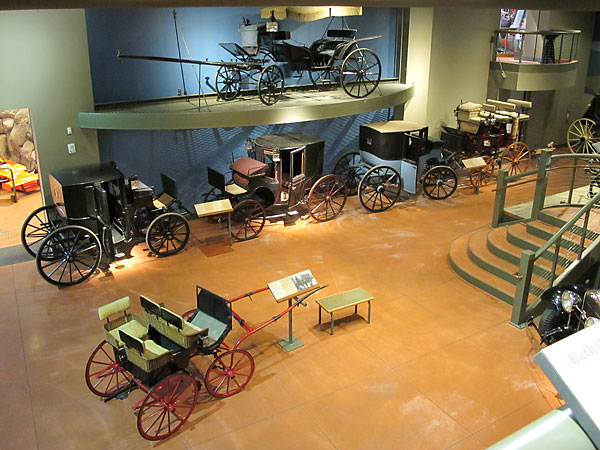
�
Miscellaneous
�
The carriage collection continues upstairs, where smaller carts share space wth special collections
�
representing other interests of the Penrose family such as native American ceremonial costumes.
�
An Overview of the Museum's Pike's Peak HillClimb Exhibits
��
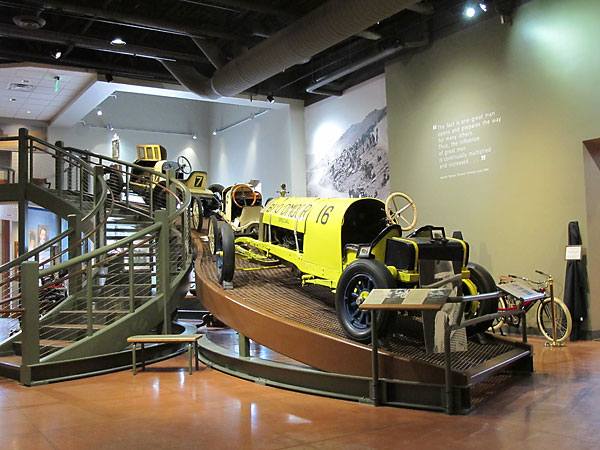
�
The Museum of the Pikes Peak International Hill Climb
�
Since 1916, racers have raced to the summit of Pikes Peak, some 14,110 feet above sea level.
�
With about 160 tight turns and an elevation gain of 4,720 feet in just 12.4 miles, the course
�
has always been a unique test of man and machine. Until 2011, the road remained unpaved.
�
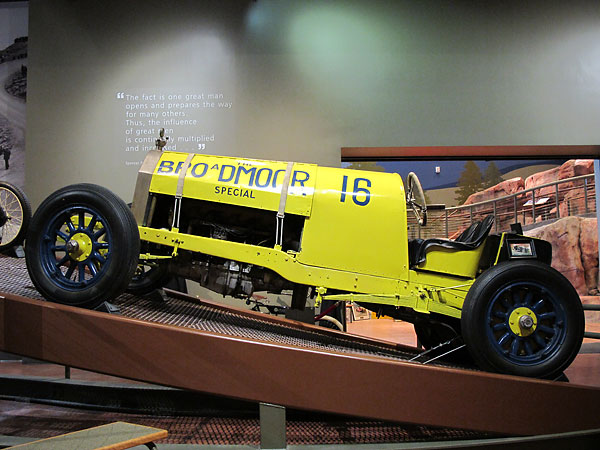
�
Broadmoor Special (Pierce-Arrow Motor Car Co. Buffalo NY, circa 1918)
�
From the beginning, the Penrose family has been closely associated with the hill climb.
�
Here's the first Pikes Peak hill climb car they put their name on.
�
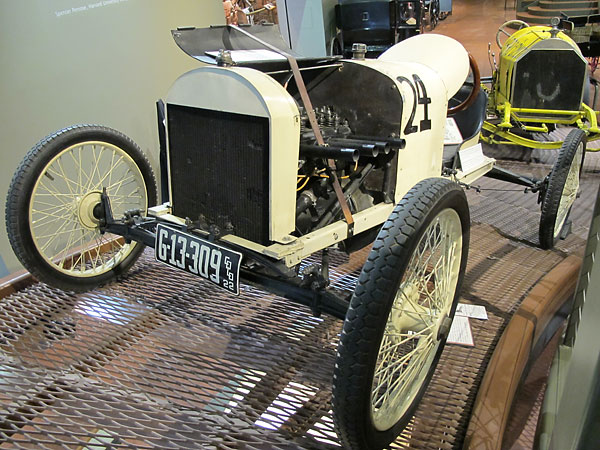
�
"Old Liz" Bullock Special (built from Model T Ford truck parts, in Madrid NE, circa 1918)
�
In 1922, twenty-two year old independent racer Noel Bullock surprised a tough field of Chevrolet,
�
Essex, Hudson, Mercer, and Packard racecars with a lowly Model T Special. The Bullock Special
�
wasn't built specifically for hillclimbing, and in fact Bullock had never entered a hillclimb race
�
before, but he had already won 74 dirt (oval) track races with his humble little car. Bullock
�
admitted to two particular upgrades for Pikes Peak: Dayton wheels and Firestone Cord tires.
�
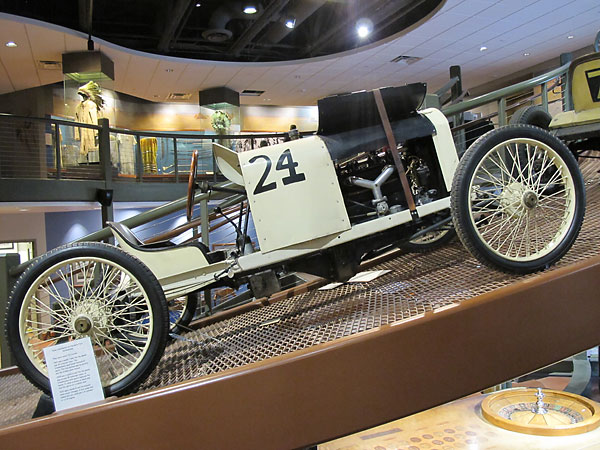
�
After the race, Bullock's car became known as "The RAJO Special"
�
Noel Bullock had also used a RAJO brand aftermarket cylinder head. RAJO was a performance brand
�
advertised in major magazines and distributed by Western Auto stores. (RAJO heads are generally
�
considered a rung or three below Frontenac heads.) At the urging of his new sponsor, Bullock
�
dramatically upgraded the appearance of his racecar with an all new body. The car you see in
�
these photos is far more polished and refined than what race spectators saw in 1922!
�
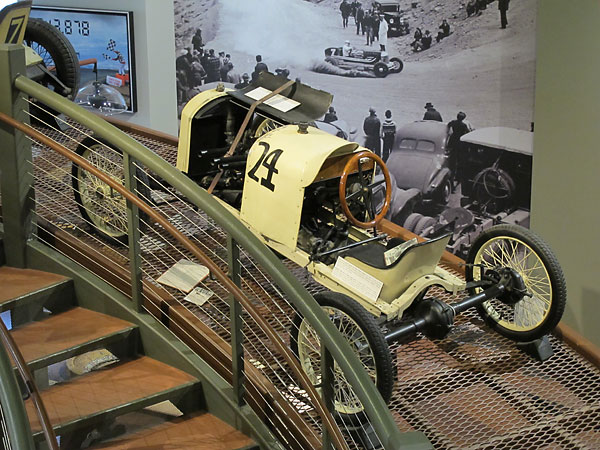
�
Blackballed by Pikes Peak Organizers in 1923
�
The gentlemen who ran Pikes Peak weren't amused by Bullock's upset victory or the publicity it got.
�
They figured that although good tires made Bullock competitive, light weight had been his advantage.
�
In 1922, the Bullock Special weighed just 975 pounds. For 1923 a new minimum weight rule was set:
�
1600 pounds! Bullock cast a 625# lead ballast, bolted it to the bottom of his car, and submitted his
�
registration. However, when he arrived to race, organizers disqualified him because earlier in the
�
year he'd participated in a race that wasn't sanctioned by the American Automobile Association.
�
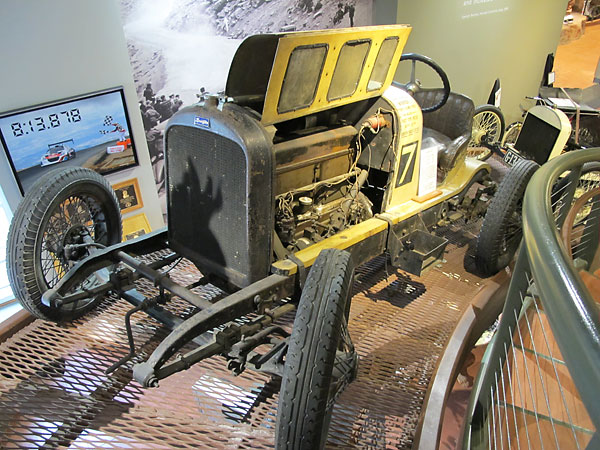
�
Minute Man Six Special (Lexington Motor Company, Connersville IN, circa 1920)
�
With Otto Loethe driving, this special short-wheelbase Lexington competed at Pikes Peak
�
from 1920 through 1924, finishing first, second, third, and then first again respectively.
�
It's powered by an Ansted six-cylinder engine with single downdraft carburetor.
�
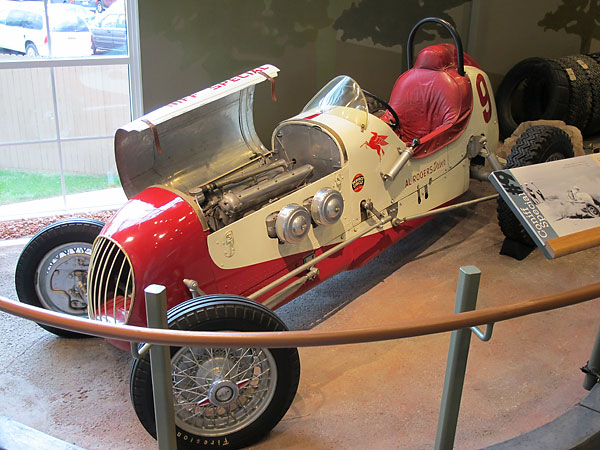
�
Coniff Offenhauser 220 Special (built by Joe Coniff, circa 1939)
�
One of the most successful racecars in Pikes Peak history, this car was driven by Al Rogers.
�
Rogers won the Pikes Peak hillclimb with it in 1940, 1948, 1949, 1950, and 1951.
�
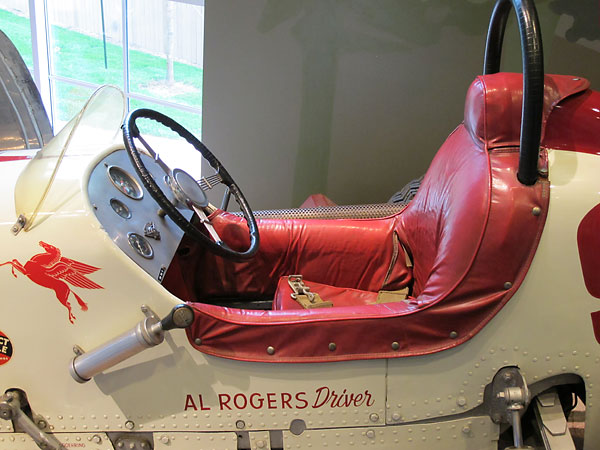
�
Durable
�
Built solely for Pikes Peak, this car was driven in the 1953 race by Phil Hulse.
�
�
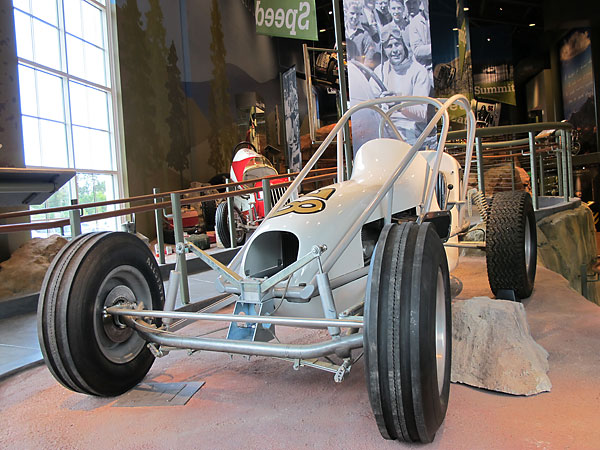
�
Conze-Offenhauser hillclimb car (built by Vincent Conze, Los Angeles CA, circa 1960...)
�
This racecar has a long, interesting history: as a "sprint car", as a "champ car", and especially
�
as a hillclimb car. Al Unser drove it to a 2nd place finish at Pikes Peak in 1960. Louis Unser
�
used it to place 8th in 1961. Slim Roberts entered it in 1962, but wrecked (and broke his neck).
�
Shortly after Slim's accident, it got its first rollcage. However, for 1964 it was updated...
�
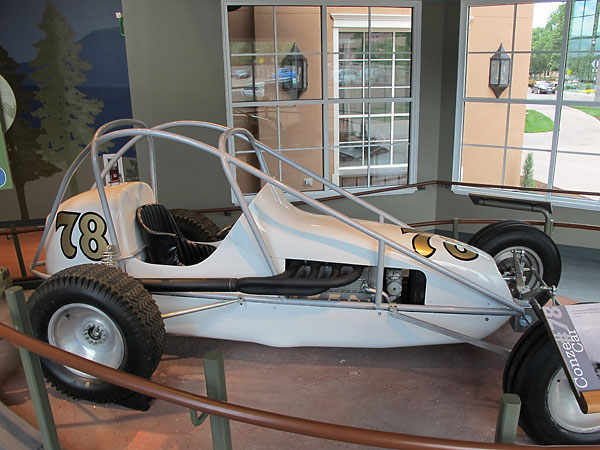
�
"Vince Conze's Down Tube Sprint Car" (circa 1964)
�
...with a distinctive and groundbreaking external rollcage. Countless sprint cars have been
�
built with external "down tube" frames since this car popularized the concept. Al Unser Sr. used
�
the Down Tube Special to win the 1964 Pikes Peak hillclimb. To this day, the car still belongs
�
to the Unser family, although Charles Lowdermilk borrowed it in 1965 (and placed 3rd). The cage
�
is cool, but this car's special advantage though was its amazing power to weight ratio, 2#:bhp.
�
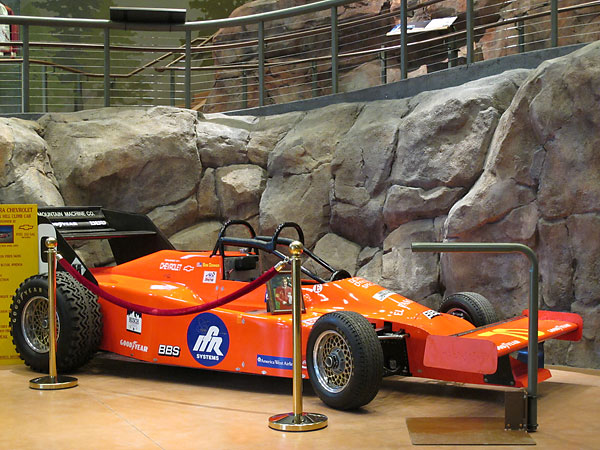
�
Donner-Dykstra DD3-Chevrolet (built in Colorado Springs CO, circa 1989)
�
Bobby Donner III won the Open Wheel class with this 355cid/620bhp Chevrolet powered racecar.
�
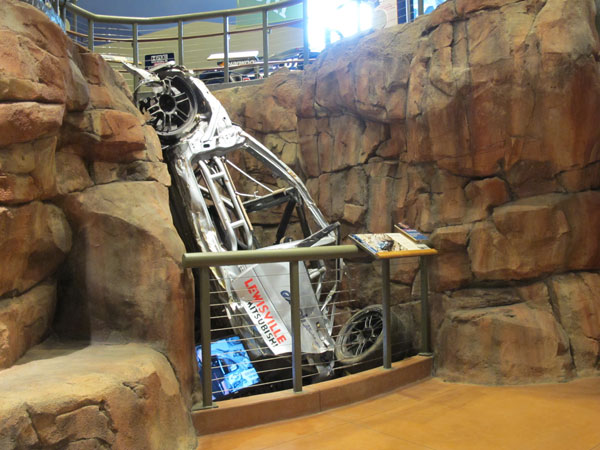
�
Mitsubishi Lancer Evolution 8 (Evolution Dynamics, Lewisville TX, circa 2012)
�
This Evo is the most famous racecar in our article, because its spectacular tumble was caught
�
on a video that "went viral". Driver Jeremy Foley and co-pilot Yuri Kouznetsov miraculously
�
walked away. They've become spokesmen for up-to-date safety equipment, properly installed.
�
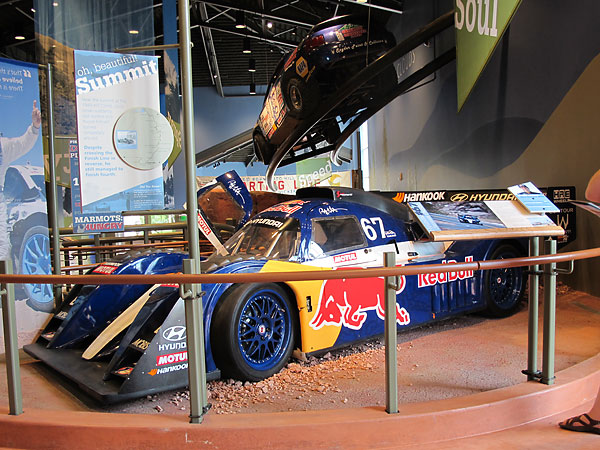
�
Hyundai Genesis PM580 (Rhys Millen Racing, circa 2013)
�
Rhys Millen drove this unlimited-class, tube-frame Hyundai racecar to a second place overall
�
finish and set the second fastest time in history (9:02.192, behind Sebastion Loeb 8:13.878)
�
at the 2013 Pikes Peak International Hill Climb. This racecar utilizes a production-based
�
engine (i.e. stock block and head castings) and stock electronic power steering system.
�
| �
Enjoying this article? Our magazine is funded through the generous support of readers like you! � To contribute to our operating budget, please click here and follow the instructions. � (Suggested contribution is twenty bucks per year. Feel free to give more!)� |
Golden Bee
��
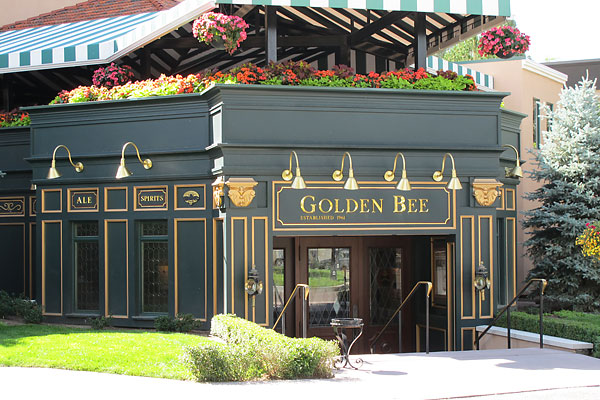
�
The Golden Bee Pub at the Broadmoor (established 1961)
�
After touring the Penrose Heritage Museum, we walked around the block for a pint...
�
�
�
Disclaimer: This page was researched and written by Curtis Jacobson.�
Views expressed are those of the author, and are provided without warrantee or guarantee.�
Apply at your own risk.�
�
All photos by Curtis Jacobson for BritishV8 Magazine. All rights reserved.�
�
�
If you liked this article, you might also enjoy:
�
• BritishV8 2014: Tour of Author Clive Cussler's Car Collection
�
• BritishV8 2013: Tour of Speedway Motors' Museum of American Speed
�
• BritishV8's Tour of Morgan Motor Company's Factory
�
• BritishV8 2012: Tour of Hatfield Restorations
�
• BritishV8 2012: Tour of the Texas State Railway Maintenance Facility
�
• BritishV8 2010: Tour of The Indy 500 Hall of Fame Museum
�
• BritishV8 2010: Tour of Mark Scott's Prototype Development Shop
�
• BritishV8's Tour of The MG Owners' Club in Cambridge
�
• BritishV8's Tour of British Motor Heritage
�
�

 �
�
 �
�
